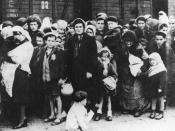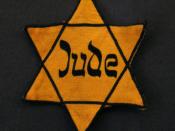Diversity is an attribute that is seen among people, situations, and cultures. Often times, triumphs, struggles, and obstacles seem to represent significant events in an individual's life, but what is overlooked in situations of challenge can teach us life's most important lessons. Everyone has encountered different situations at one time or more during their lives that has either been unpleasant or upsetting. Moreover, when we go through situations in life in which we must see things that are disturbing, we tend to change our perspective on the world. In Art Spiegelman's comics, Maus, we see numerous examples and happenings of how going through the Holocaust can be psychologically scarring. Maus also shows signs of multiplicity very clearly. In regards to culture, people are placed in unusual situations where their diversity is shown.
Maus I, A Survivor's Tale, My Father Bleeds History, creates a society that a present generation has never been exposed to.
The book itself is diverse in its reading, but extremely diverse in its presentation. The Holocaust forced an alternate way of living that ran parallel to an average lifestyle that may have been taking place in another part of the world. The diversity that is evident throughout the Holocaust cannot be compared to any other situation. The horrendous lifestyle that people who lived through the Holocaust are familiar with is very vividly animated in the art that was drawn in the book. "The Germans intend to make an example of them! The next day I walked over to Modrzejowska Street and I saw them. They hanged there one full week." (Speigelman 83) The images are graphic, but the words have more of an impact. It is a revelation to any reader who did not live through the period or ever heard stories about the difficulties...


